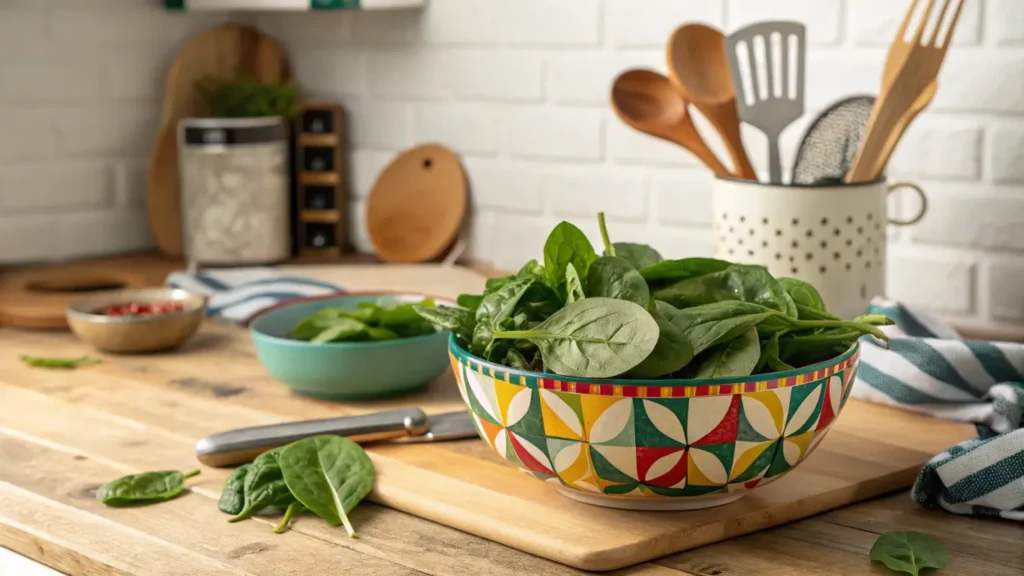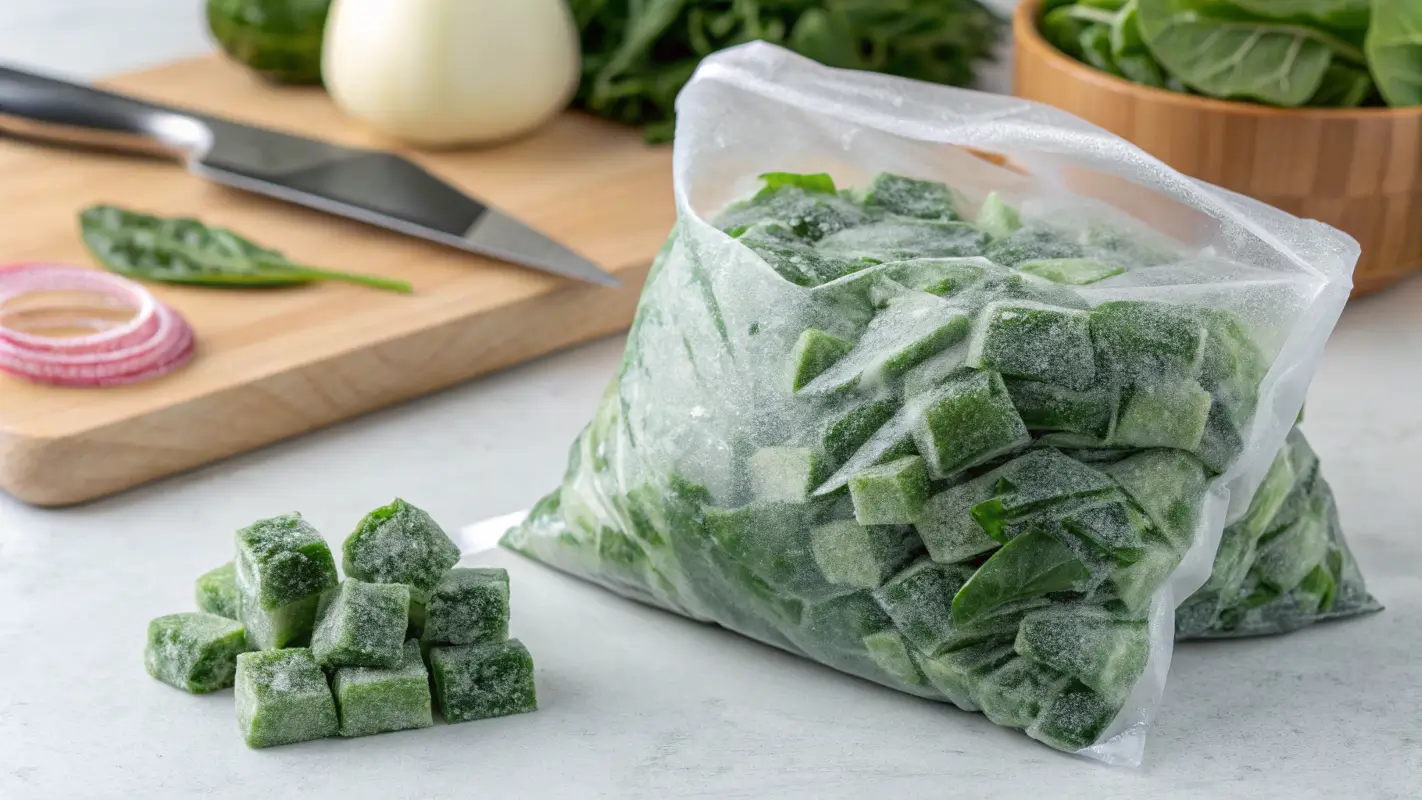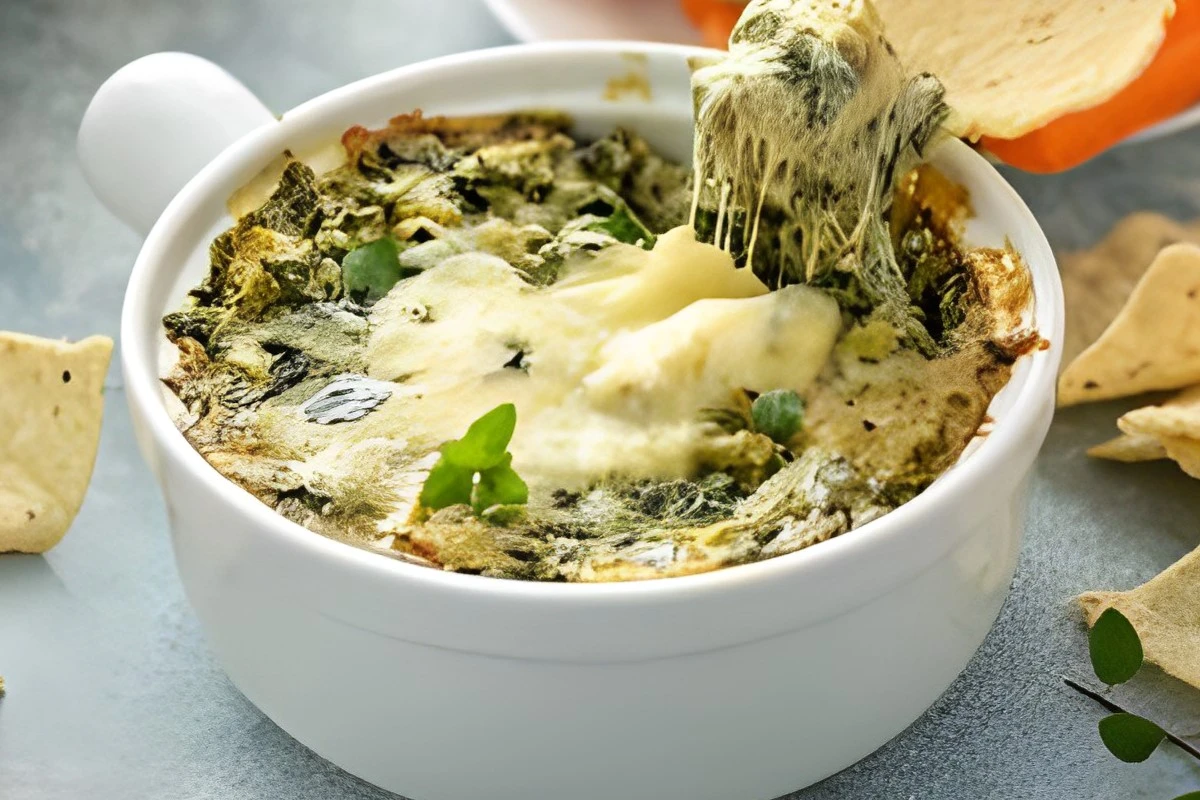Table of Contents
In the culinary world, the debate between using Fresh vs. Frozen Spinach for dips is as vibrant as the leafy green itself. Whether you’re whipping up a quick appetizer for unexpected guests or meticulously planning a healthy snack, the choice between fresh and frozen can impact not just the nutritional value but the taste and texture of your dip. This article dives deep into the heart of this debate, comparing fresh and frozen spinach across various dimensions including nutritional content, taste, texture, and convenience. By the end, you’ll be equipped with all the information you need to make the best choice for your next culinary creation. So, let’s get into the nitty-gritty of spinach, shall we?
Understanding Spinach Varieties
Fresh Spinach
When it comes to fresh spinach, it’s all about the crisp, vibrant leaves that add not just a pop of color but a burst of nutrition to any dish. Fresh spinach is typically found in the produce aisle, either bagged, bunched, or in plastic clamshell packaging, and is known for its bright green color and slightly sweet flavor. It’s the go-to choice for salads and dishes where the spinach is meant to be a star, not just a supporting character.

- Characteristics and Benefits: Fresh spinach boasts natural texture and flavor. It contains high water content, offering hydration, and abounds in vitamins and minerals. The convenience of pre-washed bags adds to its appeal, though bunches of spinach require a bit more love to clean thoroughly.
- Common Uses in Dips: In dips, fresh spinach can offer a more delicate texture and a brighter flavor compared to its frozen counterpart. It’s ideal for lighter, fresher-tasting dips where the spinach’s texture can shine through.
Frozen Spinach
Frozen spinach, on the other hand, is a powerhouse of convenience and nutrition. It undergoes a quick blanching process before freezing, which helps in retaining its color and some of its nutrients. This process makes frozen spinach a denser, more concentrated source of vitamins and minerals.

- Processing and Nutritional Impact: The blanching process before freezing helps to kill bacteria and pause the loss of nutrients, making frozen spinach a reliable source of vitamins throughout the year. However, it’s important to note that this process may lose some water-soluble vitamins.
- Advantages for Dip Preparation: For dips, frozen spinach offers a practical advantage. Its condensed form means you get more spinach per cup, making it a cost-effective and nutrient-dense option. Plus, its softer texture once thawed integrates seamlessly into dips, making it a fuss-free ingredient for thicker, creamier creations.
In the battle of fresh vs. frozen spinach for dips, both contenders have their unique strengths. Fresh spinach dazzles with its crisp texture and natural flavor, while frozen spinach brings convenience and a nutritional punch to the table. As we delve deeper into this leafy green debate, keep in mind that the best choice often boils down to the specific needs of your recipe and personal preference.
Nutritional Comparison (Fresh vs. Frozen Spinach)
When deciding between fresh and frozen spinach for your dips, the nutritional content is a pivotal factor. Both varieties boast a wealth of vitamins and minerals, but the way they’re processed can affect their nutritional profiles differently.
Nutritional Content Analysis
- Vitamin and Mineral Content: Spinach is a nutritional powerhouse, packed with iron, calcium, magnesium, and vitamins A, C, and K. Fresh spinach delivers these nutrients in their most natural state. However, frozen spinach loses some water-soluble vitamins like vitamin C during blanching. Still, it offers a denser nutrient profile because of its lower water content.
- Impact of Processing on Nutrients: Blanching frozen spinach slightly reduces some nutrients. Yet, freezing preserves these nutrients, making it a dependable source all year. Fresh spinach might lose nutrients faster due to natural processes and storage.
Enhancing Nutrient Absorption
- Combining Spinach with Other Ingredients: Add vitamin C-rich foods like lemon juice or bell peppers to your spinach dip. This boosts iron absorption, especially useful with frozen spinach which may have less vitamin C after blanching.
- Tips for Maximizing Health Benefits: Use healthy fats like olive oil to improve absorption of spinach’s fat-soluble vitamins (A, D, E, K). Choose low-fat dairy or alternatives for a lighter, creamy dip.
In the realm of nutrition, both fresh and frozen spinach have their merits. While fresh may offer a slight edge in terms of water-soluble vitamins, frozen spinach provides a denser nutrient profile and longer shelf life, ensuring you get a good dose of greens any time of the year. Ultimately, both forms of spinach can contribute to a healthy, nutrient-rich dip, depending on how you prepare and serve them.
Taste and Texture Considerations
The choice between fresh and frozen spinach isn’t just about nutrition; taste and texture play a crucial role, especially when it comes to dips. After all, the perfect dip is a harmony of flavors and a delight in terms of mouthfeel.
Flavor Profile
- Fresh vs. Frozen Spinach Taste: Fresh spinach has a mildly sweet and grassy flavor that can enhance the freshness of a dip. Its taste is subtle, allowing other ingredients to shine through while contributing a crisp, green note. On the flip side, frozen spinach, due to its condensed form and slight nutrient concentration, might offer a more pronounced spinach flavor. This can be a boon in dips where you want the spinach taste to be more evident.
- How Processing Affects Flavor: The blanching process frozen spinach undergoes can slightly alter its flavor profile, making it a tad more bitter than its fresh counterpart. However, when mixed into a dip with various seasonings and ingredients, this difference becomes less noticeable. The key is to balance the flavors to complement the type of spinach you’re using.
Texture in Dips
- Desired Consistency for Dips: The texture of your spinach dip can vary significantly depending on whether you use fresh or frozen spinach. Fresh spinach, when chopped and mixed into a dip, retains a bit of its crunch, providing a pleasant textural contrast. Frozen spinach, being softer and more wilted, blends more seamlessly into dips, creating a smoother, more uniform consistency.
- Adjusting Texture Based on Spinach Type: Fresh spinach offers a chunkier texture, while frozen spinach blends smoothly for a creamier dip. Ensure to squeeze out excess water from frozen spinach to avoid a watery dip.
The choice between fresh and frozen spinach depends on your preferences and the qualities you want in your dip. Whether you prefer a crisp texture or a stronger spinach flavor, both types have their merits. Understanding their effects helps you make the best choice for your dish.
Shelf Life and Convenience
When whipping up a spinach dip, the shelf life and convenience of your chosen spinach type can significantly influence your cooking process. Let’s delve into how fresh and frozen spinach stack up in these aspects.
Evaluating Shelf Life
- Fresh Spinach Lifespan: Fresh spinach, while vibrant and nutrient-rich immediately after purchase, has a relatively short shelf life. Typically, it can last up to a week in the refrigerator, though this can vary based on storage conditions. Moisture is the enemy of fresh spinach, leading to quicker spoilage.
- Frozen Spinach Storage Benefits: Frozen spinach shines in terms of shelf life. Properly stored, it can last for several months in the freezer without significant loss of nutritional value or taste. This extended shelf life makes frozen spinach a convenient option for those looking to have spinach on hand for impromptu cooking sessions.
Convenience in Preparation
- Ease of Use for Quick Dip Recipes: When it comes to convenience, frozen spinach often takes the lead. Pre-washed and pre-chopped, it’s ready to be thawed and added to your dip, saving you time and effort. This can be particularly handy for busy cooks or when you need to prepare a dish quickly.
- Making the Best Choice for Your Needs: If you’re planning a dip for a special occasion and have the time to prep, fresh spinach might offer that bright, fresh flavor you’re after. However, for everyday cooking or when time is of the essence, frozen spinach provides a practical and nutritious alternative.
The decision between fresh and frozen spinach often comes down to balancing the desire for freshness with the need for convenience and longevity. Both types have their advantages, and the best choice may vary depending on your specific situation and preferences. Consider shelf life and preparation ease to select spinach that suits your needs, ensuring a delicious and practical spinach dip.
For more healthy and delicious appetizer recipes, check out this list of nutritious dip ideas on Healthline.
FAQs About Fresh vs. Frozen Spinach
When it comes to choosing between fresh and frozen spinach for dips, several questions often arise. Here are some of the most frequently asked questions to help clarify any doubts.
Is frozen spinach as nutritious as fresh spinach for dips?
Yes, frozen spinach is nearly as nutritious as fresh spinach. Freezing spinach may result in slight loss of water-soluble vitamins like vitamin C. However, it still retains its richness in fiber, iron, and calcium. Its convenience and year-round availability make it a viable option for nutritious dips.
How does the choice between frozen and fresh spinach affect dip texture?
The choice significantly affects the texture. Fresh spinach retains some crispness, adding crunch to dips. Frozen spinach, blanched and frozen, offers a softer texture, ideal for creamier recipes.
Can I substitute frozen spinach for fresh in any dip recipe?
Generally, yes, you can substitute frozen spinach for fresh spinach in most dip recipes. However, it’s important to adjust for water content. Frozen spinach should be thoroughly thawed and squeezed of excess water to prevent your dip from becoming too runny. The substitution ratio is typically 1 pound of fresh spinach to 10 ounces of frozen spinach, as frozen spinach is more condensed.
What are the differences between Fresh vs. Frozen Spinach?
Fresh spinach typically retains its crispness and adds a slight crunch to dishes, while frozen spinach offers a softer texture ideal for blending into recipes like dips and smoothies. Both variations boast similar nutritional profiles but may vary slightly in taste and texture due to their processing methods.
What are the essential spinach dip ingredients?
The key spinach dip ingredients typically include spinach (fresh or frozen), sour cream, mayonnaise, cream cheese, grated Parmesan cheese, minced garlic, and various seasonings such as salt, pepper, and onion powder. Additional ingredients like chopped artichoke hearts or water chestnuts may also be included for added texture and flavor.
What are the differences between fresh and frozen spinach?
Fresh vs. Frozen Spinach: The main differences between fresh and frozen spinach lie in their texture, flavor, and convenience. Fresh spinach is crisp and flavorful, while frozen spinach offers a softer and milder taste. Additionally, fresh spinach requires more preparation and has a shorter shelf life compared to pre-washed, chopped frozen spinach, which lasts longer.
Conclusion
In the culinary debate of fresh vs. frozen spinach for dips, both contenders have their unique strengths and applications. Fresh spinach offers a crisp texture and a slightly sweet flavor, ideal for lighter, fresher dips. On the other hand, frozen spinach provides convenience, a longer shelf life, and a more concentrated source of nutrients, making it suitable for creamier, heartier recipes.
Ultimately, the best choice depends on your specific needs, preferences, and the particular recipe you’re preparing. Consider nutritional content, taste, texture, shelf life, and convenience to make an informed decision for your culinary creations.
Whether you prefer fresh spinach’s freshness or frozen spinach’s convenience, adding this leafy green to your dips boosts nutrition, color, and flavor. So, go ahead and experiment with both types in your recipes. You may discover that each has a unique role in your kitchen, enhancing your dips’ flavor significantly.





